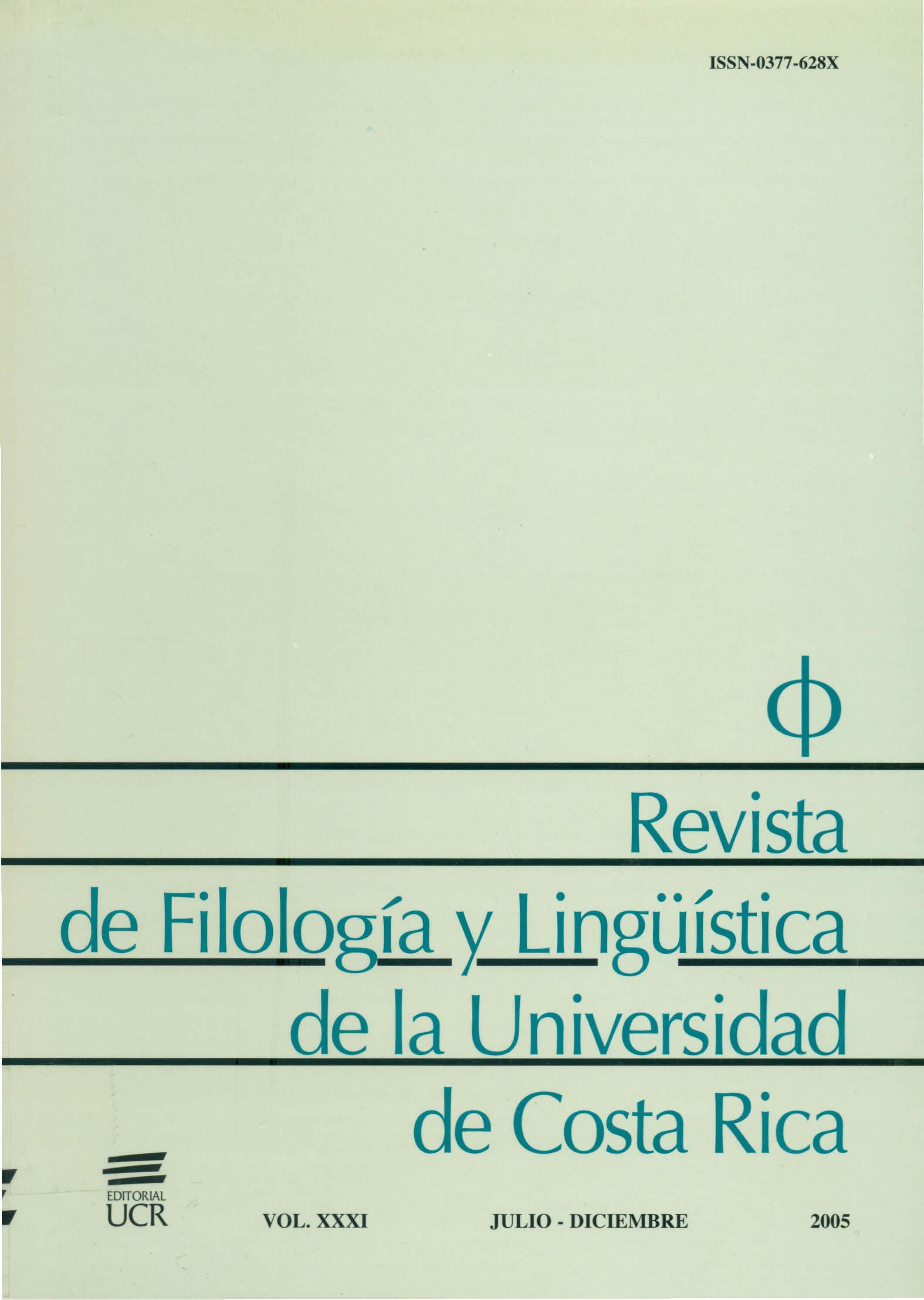Abstract
This study consists of a close reading of "Ondina" and "Simbiosis del encuentro," short stories by Carmen Naranjo. Following what Michel Foucault and some feminist theories suggest, the study suggests that Naranjo, in her two stories, offers a way to resist and confront socially established patterns regarding the female body. Naranjo turns around the myth of women's beauty and in doing so, presents the idea that the body should no longer be what defines woman.References
Bartky, Sandra Lee. "Foucault, Femininity, and the Modernization of Patriarchal Power". En: Katie et al (eds.),129-154.
Borloz Soto, Virginia. "Presentación del libro 'Más allá del Parismina' de la escritora Carmen Naranjo". Citado en: www.Ctcr.ac.cr/revistacomunicacion/1_2001finalpresentacion_del_libro.htm.
Braidotti, Rosi. "Mothers, Monsters, and Machines". En: Katie et al (eds.), 59-79.
Conboy, Katie et al (eds.). 1997. Writing on the Body. Female Embodiment and Feminist Theory. New York: Columbia University Press.
Cranny-Francis, Anne. 1995. The Body in the Text. Victoria: Melbourne University Press.
Helrnuth, Chalene. 1996. "Entrevista a Carmen Naranjo". Hispamérica. Revista de Literatura. 74: 47-56.
Morton, Lisa. 1995. "Crush and Sweetie: the Female Grotesque in Two Contemporary Australasian Films". Deep South. 1 (3). http://www.otago.ac.nz/DeepSouth/volln3/morton_issue3.html.
Muñoz, Willy. 2000. "El lenguaje y la devaluación del cuerpo preñado en 'Simbiosis del encuentro' de Carmen Naranjo". Letras Femeninas. XXVI (1-2): 99-110.
Naranjo, Carmen. 1985. "Ondina". Ondina. San José: EDUCA, 2 ed.: 9-18.
(1985). "Simbiosis del encuentro." Ondina. San José: EDUCA: 35-42.
Russo, Mary. 1997. "Female Grotesques: Carnival and Theory." En: Katie et al (eds.): 318-336.

